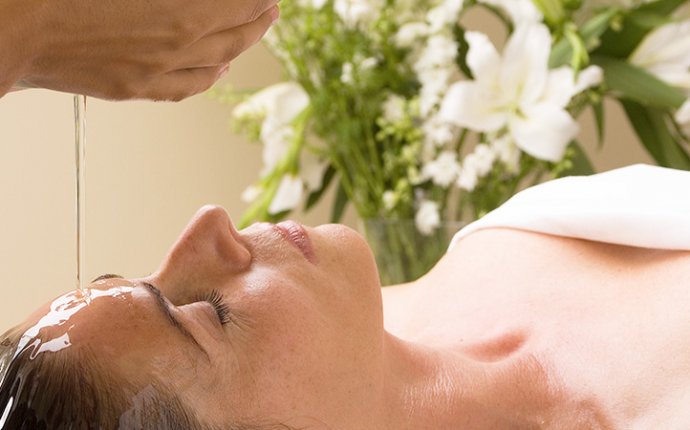
Ayurveda cancer Diet
This is the third in a three part series on cancer. In part one, Dr. Halpern detailed the Western understanding of cancer, its pathophysiology, statistics, screening tests and treatment. In part two, he introduced the Ayurvedic concepts of gulma, granthi and arbuda and their classical treatments. In this issue, Dr. Halpern provides a complete overview of the many potential holistic treatments that may be offered by the practitioner of Ayurveda.
Introduction
Patients who present with cancer have three basic options for treatment. The first, and the most conventional, treatments utilize chemotherapy, surgery and radiation. Second are a wide range of alternative therapies. The third is a combined approach. There are benefits and challenges regardless of which decision is made. Conventional treatments for cancer have varying success rates. For some cancers, when caught early, conventional therapies do have a high success rate. Success decreases as the cancer progresses. For some cancers, such as pancreatic cancer, there is little conventional medicine can do to effect a cure even if it is caught early. Conventional medicine, backed by extensive scientific studies, offers the patient the opportunity to know what they are getting into before treatment begins. Statistics are available for the success and failure of treatment. A list of side effects for each treatment is also available. This information is important to patients who will be making choices that literally affect their own life or death. Alternative medicine offers many possible therapies ranging from dietary changes, the use of herbs, and nutritional supplements to psychic, crystal and energy healing, visualization therapies, prayer and meditation, light and color therapies, and much more. While there is anecdotal evidence of success with many of these methods, alternative methods lack the studies and statistics that show success and failure. As a result, those who choose alternative methods of healing from cancer are doing so primarily on faith or an inner belief system that supports this path. Some patients and practitioners choose to integrate conventional and alternative therapies. The attitude of some oncologists (cancer specialists) is that if it won't hurt you, go ahead and try it. This attitude becomes more pervasive as the condition spreads and conventional treatments fail. At this time, both practitioner and patient start looking for miracles. One concern of the oncologist is that some alternative medicines might interfere with the effectiveness of their conventional medical treatment. As a result, many oncologists tell their patients not to utilize herbs while also undergoing chemotherapy. This concern is justified, because herbs do contain active pharmacological substances that may support or interfere with treatment. While some research is now being done on drug and herb interactions, extensive and conclusive knowledge is not available.
The Role of the Practitioner
The first decision facing a patient is what path to choose. Conventional? Alternative? Integrative? There is no one right answer. In my practice, patients are encouraged to make their own decision, as it is their life that is on the line. The practitioner must act as a resource to help educate their patient about the possibilities. The more the practitioner knows about the type of cancer and the available treatments, the more they can educate their patients. No practitioner, medical or alternative, can make promises of a cure. Healing is the work of God and Nature. The practitioner can only hope to be a conduit of practical knowledge, universal energy, and divine love. There is more to healing than the medicine (conventional or alternative) the patient takes. It is not just the practitioner's vital knowledge that is important, but their heart. A practitioner is who is compassionate, kind, and present is one who is prepared to be a conduit for the divine. Knowledge is useful and important, but it is not the stuff of miracles. Miracles often arise out of the patient and practitioner relationship, because when the patient has faith, confidence and belief in the practitioner, hope is kindled and healing is possible. Studies have shown that the role of the mind and the disposition of the patient are important to the final outcome of any treatment. Practitioners who understand this keep the door open to miracles.
Healing from cancer requires not only a skillful, knowledgeable, and compassionate practitioner but a responsible, insightful, and compliant patient who understands their role in the healing process. The process begins by gathering information about their condition, the choices available for treatment, and the known information about the success and complications of each approach. For the patient ready to take responsibility for their choices and insightfully engage fully in the process of healing, many questions arise. What does this disease have to teach me? What role did I play through my actions, thoughts, and emotions in creating the condition? What can I change in order to better align myself with the energies of nature? Patients willing to engage in heart opening practices open themselves up to receiving divine grace and its power of healing, stimulating self-compassion, and self-love. Patients must also be willing to undergo lifestyle changes, the hardest and most powerful part of the healing process. Changes in lifestyle can remove and break the offending pattern of actions that bring about imbalance. That in turn creates a new form of suffering. This is called tapas-the process of giving up attachments that ultimately provides the patient with new power. Also, the best patient is compliant, doing all that the practitioner asks and allowing the practitioner to guide them through the healing process. When the hearts of the patient and practitioner are open, divine love and light have two paths through which they can enter, bringing about the miracle of healing.
The Ayurvedic Approach to Healing
Ayurveda approaches the patient on several levels of causes, including physical, emotional and spiritual.














